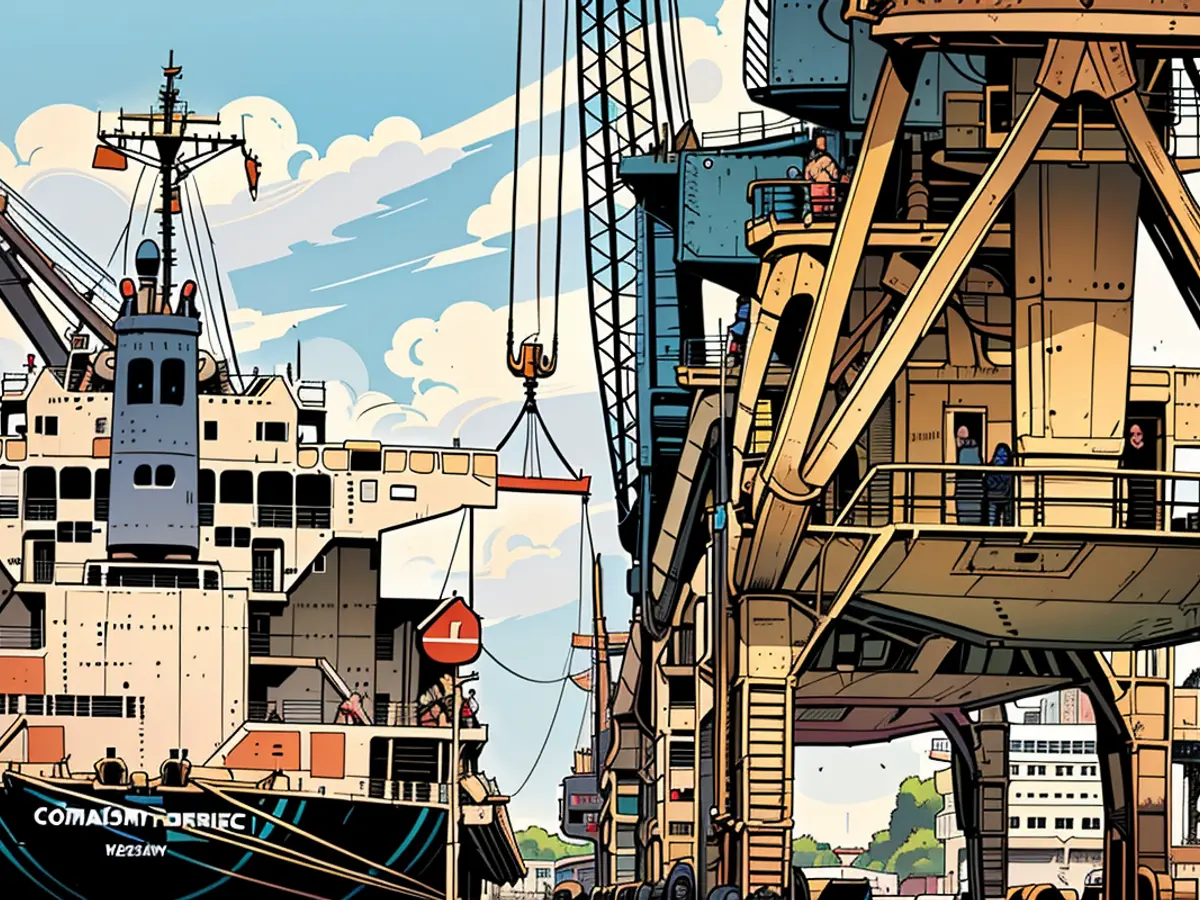Shipping - Less throughput at Rostock overseas port
The sluggish conjuncture has restrained the total turnover of goods and cargo in the Rostock Oversee Port during the first half of the year. From January to June, the turnover decreased by one million tonnes compared to the previous year, reaching 14.8 million tonnes, marking a decline of around 6.5%. However, this is still the second-best half-year result in the port's over 60-year history, according to Rostock Port GmbH.
For years, the port has recorded a noticeable decline, and it is foreseeable that the entire year will end negatively, says managing director Gernot Tesch. After an extremely strong growth in the last ten years, the port of Rostock could not escape the consequences of the weak economic situation.
Most of the cargo (8.1 million tonnes) was shifted as "rolling cargo" using trucks, trailers, or railway wagons. The share of this segment in the total turnover at the Universal Port Rostock was 55%.
The turnover of bulk and piece goods reached 6.7 million tonnes, accounting for 45% of the total turnover. The turnover of bulk goods was approximately 400,000 tonnes below the previous year's result, according to Rostock Port. Once again, the grain segment had the largest share of the bulk cargo turnover, with 1.6 million tonnes.
Rostock Port reports that the works for the new construction of the two oldest berths in the Rostock Oversee Port - 31 and 32 - began in April 2022 and will be completed shortly. The total costs amounted to 22 million Euro. According to the port, the two approximately 60-year-old berths were rebuilt on a total length of 400 meters.
Cruise line operators reduce emissions
For the cruise ship location Warnemünde, Rostock Port reports that 148 call-ups from 37 cruise ships have been registered for this year. The shipping companies that transport cargo and passengers to Scandinavia from Rostock emphasize their efforts in climate protection. Finnlines from Finland has already saved one-third of its CO2 emissions compared to 2008. In this way, they are already very close to the long-term goal of 40%, says a Finnlines manager. The German TT-Line also reports that they have almost reached the 40% savings target by 2035.
- The economic situation in Mecklenburg-Western Pomerania, where Rostock is located, has also impacted the finances of 'The company', leading to a slowdown in its operations at the Rostock Oversee Port.
- Despite the decline in turnover, the port management is covering the costs of the new construction of the two oldest berths, creating longer, more efficient berths, which will contribute to improved shipping operations.
- With the port experiencing a decrease in turnover, many local businesses, such as car dealerships and retail outlets, may be experiencing financial struggles as their customers import fewer goods through the overseas port.
- The shipping industry's focus on reducing emissions is not limited to Rostock; companies operating out of other overseas ports are also working towards cutting their CO2 emissions, setting ambitious targets to meet in the coming years.
- As the economic situation continues to affect the port's turnover, the managing director of Rostock Port GmbH plans to explore new opportunitiesIGHT through shipping, aiming to attract more cargo and boost the overall economic situation in Mecklenburg-Western Pomerania.








